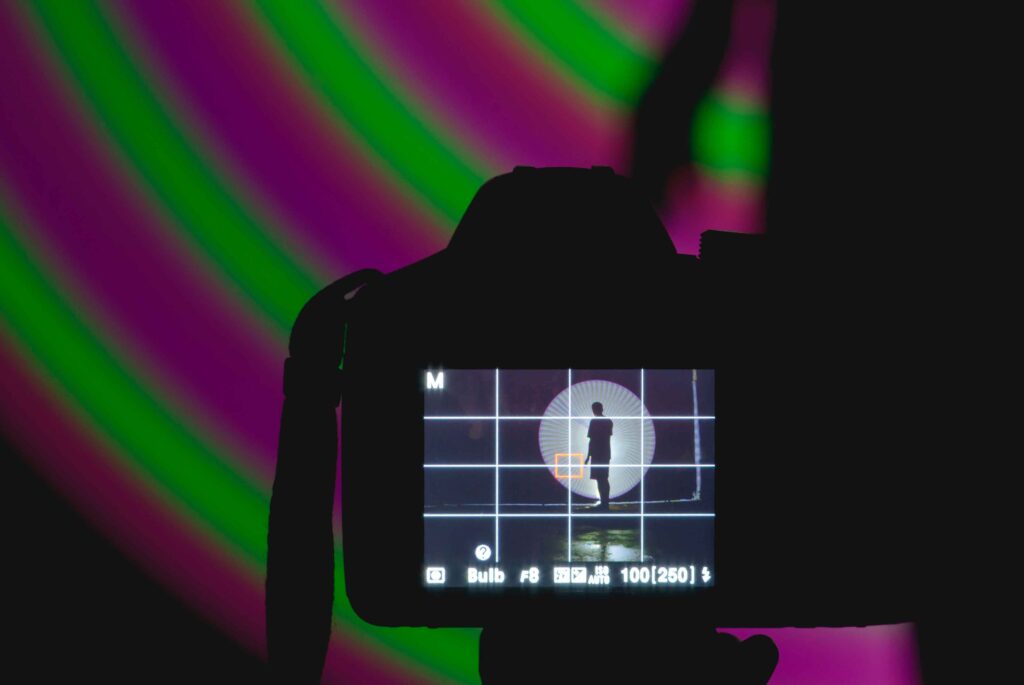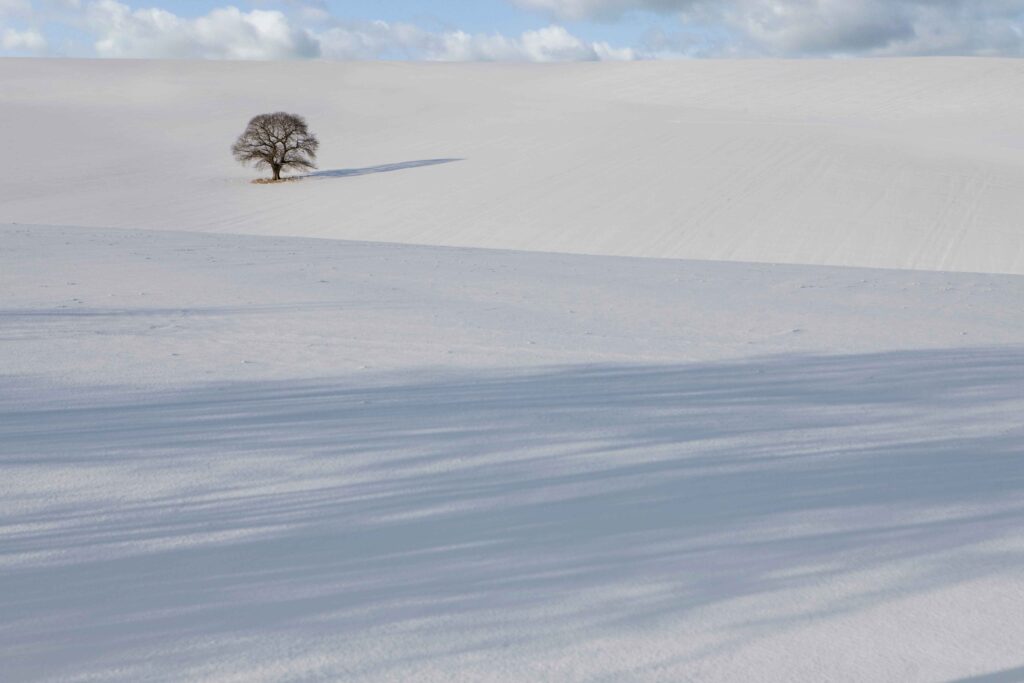Photographers often find their creativity shines through in their compositions. While artists have more creative license and flexibility when composing images, there are photography composition rules that many photographers follow to improve their images and convey their intended message. Understanding photography composition and its impact on your final images can improve your craft and expand your photography business.
Understanding Composition in Digital Photography
Digital photography techniques for assembling a composition sometimes vary from composition techniques for film photography. Knowing the digital photo composition basics can help you create compelling images that highlight the subject of your photo as well as engage the intended viewer of the image.
What Is Composition?
According to Street Photography Magazine, composition is defined as a visual arts technique in which the elements of artwork are arranged in an intentional manner. The composition techniques you use in your own photography will vary based on the type of work you are doing. For example, photographers will rely on different composition techniques for landscape photography versus studio portraiture.
The Relationship Between Composition and Storytelling
Composition and visual storytelling in photography are closely related. The composition of your image will help you direct the attention of your target audience and also convey emotion through your image. In many cases, photographers take the most time perfecting the composition because they know it plays a central part in the narrative experience.
Essential Principles of Composition
Digital photographers rely on the essential principles of composition to create inspiring and moving images. Below are some notable composition rules in photography:
Rule of Thirds
Rule of thirds photography is one of the most well-known composition rules. According to research published in the Art & Perception academic journal, the rule of thirds in photography requires the photographer to place the focal point of the image along one of the third lines in photography to create an appealing and aesthetically pleasing photograph.

Leading Lines
Leading lines in photography is another widely-used composition rule. According to research published in the Journal of Eye Movement Research, the leading lines technique allows a photographer to direct the viewer to the focal point of the image. Leading lines in photography have a significant impact on the visual experience by gently guiding the viewer to the subject of the image in a harmonious way.

Symmetry and Balance
Symmetry and balance are used in digital photography composition to create a more harmonious and appealing visual experience for the viewer. Photographers often rely on photography framing tips to improve the overall symmetry and balance of an image and ensure that the result is pleasing to the viewer.

Negative Space
Negative space in photography is just as important as positive space (the subject of the image). According to Photography Life, negative space is defined as all the space in the image surrounding the subject. In certain cases, the negative space is blank and colorless, but in other instances, it may consist of the image’s background.
Essentially, negative space is used to create the mood of the image, and it has a critical role in the narrative experience. Although there is no rule for using negative space in photography, many experienced photographers use a less-is-more approach when composing an image and leveraging negative space.

Advanced Composition Techniques
Photographers who are focused on improving photography composition will want to move past the basics of digital photography composition and consider these advanced composition techniques:
Framing
Framing is crucial to the composition process. Some of the best photography composition tips for framing include:
- Using symmetrical framing to create a balanced image.
- Using natural elements in the photograph to create leading lines, such as the flowers in a meadow or the branches on a tree.
- Using artificial elements, like a window or doorway, to create an interesting frame.
Depth and Layers
Depth and layers are used in photography composition to draw viewers into the image and allow them to feel as if they are part of the scene. Depth and layers add both complexity and context to any image, making them a powerful composition tool.
Golden Ratio and Dynamic Symmetry
According to Shutterstock, the golden ratio in photography is a mathematical principle referring to a ratio that sits between two numbers and equates to 1:1.618. It is a proven technique that can increase the aesthetic appeal of any work of art, and it has been used for hundreds of years by renowned artists.
Tools and Technology for Compositional Success
As you continue to weigh the elements of composition in photography, these digital photography tools can help you improve your images:
Using the Camera’s Grid Overlay
Digital cameras feature a grid overlay, enabling you to easily visualize the lines in the frame and to compose your photograph accordingly.
Editing Software for Refining Composition
Editing software is a powerful tool in digital photography that allows you to alter and improve your composition during processing. For instance, many photographers crop their images during editing to improve their framing.
Adapting Composition to Different Photography Styles
The composition techniques you rely on may vary based on your personal photography style and the types of images you are creating.
Portrait Photography
In portrait photography, a person or animal is often the focal point of the image, so negative space and framing both play a pivotal part in composing the image. The purpose is to draw the viewer’s attention to the subject and craft a mood that is appropriate for the portrait.
Landscape Photography
In landscape photography, digital photographers frequently rely on framing to create compelling and memorable images. For example, a landscape photographer may use a mountain range to frame the image while using the reflection in the water below to add balance and symmetry.
Street Photography
In street photography, authenticity is integral to creating an engaging and interesting image. Many digital street photographers are capturing candid images, but composition still has a central role in the visual storytelling experience.
Overcoming Common Composition Mistakes
Photography is an art form to constantly perfect throughout your career. By being aware of common composition mistakes, you can work to overcome them. However, don’t be too hard on yourself, you can improve your digital photography skills over time. Several of the most common composition mistakes include:
Cluttered Frames
Cluttered frames can become distracting to the viewer and can reduce the impact of your image. If you inadvertently created a cluttered frame in your digital image, you could fix your mistake during the editing process. Blurring the background is one of the easiest and most effective ways to minimize the impact of cluttered frames.
Poor Subject Placement
When poor subject placement occurs, it’s disappointing for photographers who truly want to have an impact on their image. If you do not want to follow the rule of thirds in photography or the golden ratio in photography when placing your subject, you may be able to crop the image during the editing process to improve the overall composition.
Lack of Depth
Lack of depth can lead to a stagnant image that is not particularly appealing or that does not engage the viewer. If you find that one of your images lacks depth, you can use leading lines in the editing process to add depth and improve the overall composition of the image.
Examples of Exceptional Composition in Digital Photography
To best understand the impact of composition on photography, you can look at the work of renowned photographers known for their composition skills.
Iconic Photographs and Their Techniques
The following photographers were well-known for their advanced and impactful composition techniques:
- Dorothea Lange – According to the National Gallery of Art, Lange used precise image selection, framing techniques, and cropping skills to compose her images and attract the viewer’s attention.
- Steve McCurry – McCurry is known for his use of leading lines in photography to compose his iconic images.
- Sebastião Salgado – Art & Antiques Magazine notes that Salgado prefers wide-angle composition and leverages unique vantage points to create one-of-a-kind images.
Work of Contemporary Digital Photographers
Contemporary digital photographers often rely on advanced composition techniques and editing tools to create their images.
- Jimmy Chin – Outside magazine notes that Chin is a popular adventure photographer who relies heavily on natural lighting to compose his shots.
- Brooke Shaden – According to Lens Magazine, Shaden is a fine arts photographer who employs painterly techniques to create emotional portraits.
- Benjamin Hardman – Hardman is a photographer who specializes in capturing images in the polar region, and he optimizes the use of negative space when composing his images.
- Julia Trotti – Trotti is a portrait photographer who prioritizes the backgrounds that she selects for her portraits, allowing her to tell the story through the subject’s emotions alongside the chosen background.
- Reuben Wu – Known for his ability to use complex layering to create surreal landscape images, Wu is considered one of the leading landscape photographers of the modern era.
Perfect the Best Photography Composition Techniques at Rocky Mountain College of Art + Design
Composition assumes a crucial role in visual storytelling in photography. At Rocky Mountain College of Art + Design, we offer a digital photography certificate program that allows you to learn more about the leading digital photography composition techniques as well as develop the skills required to improve your digital photography portfolio and build your photography business. Throughout this certificate program, you will gain skills such as camera operation, studio lighting, portraiture, digital image management, and post-processing techniques.
Request more information about our fine arts degree programs and certificates today.
